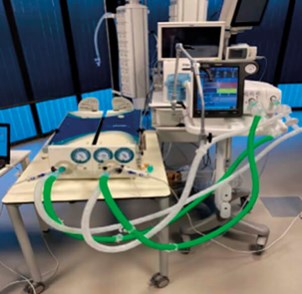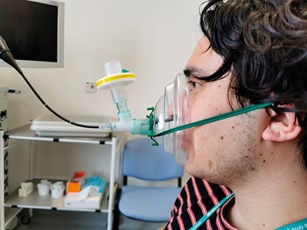The coronavirus pandemic has mobilised medical innovators in an amazing way. We take a look at just a few of the hundreds of innovative products and techniques that have been developed and used in the last few weeks. Some of these were in existence before the pandemic and have now become incredibly useful; others are entirely novel and have gone from the drawing board to production in just a few days. Many of the projects have brought together people from incredibly varied disciplines – Formula 1, ITU, aerosol analysis, mathematical modelling, computer programming and others. We salute all the enterprises!
- ENT outpatient innovations -
Ambu® aScopeTM
Flexible nasendoscopy, a common ENT procedure, is aerosol generating. For a surgeon, placing their eye near an endoscope with the other end in a patient’s potentially infected airway, carries deadly risk. Ambu® aScopeTM – and indeed other video endoscopes – allows for this to be done more safely.
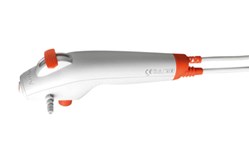
https://cutt.ly/bumqfKb
Reducing aerosol in flexible naso-laryngoscopy
A novel method conceived by a team of ENTs from University Hospital, Monklands, Scotland, designed to reduce the aerosol during flexible naso-laryngoscopy utilising the available resources in the hospital.
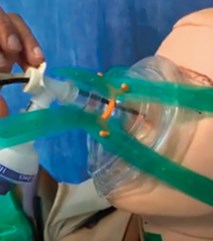
https://cutt.ly/8umq9vA
SNAP device by endoscope-i
A device designed to aid clinicians in recommencing safe nasendoscopy. Clicks directly onto a conventional surgical mask. It creates a hole in the mask through which an endoscope can easily pass.
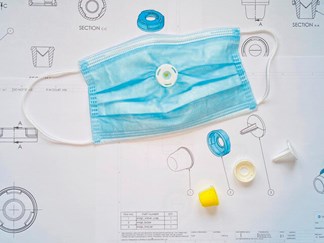
https://cutt.ly/3umwSNQ
Voigt modified N95 mask
Similar to the SNAP, the patient wears a mask, with a small one-way valve created in it. The one-way valve allows the patient to be scoped through the opening, safely, and the patient will not shed or spread viral particles during the exam.
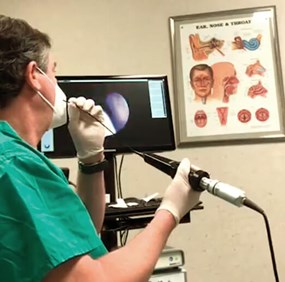
https://cutt.ly/5umecds
ENT mask
A simple modification of existing equipment to reduce aerosol spread in outpatient laryngoscopy, developed by a team at Royal Wolverhampton Hospital, UK. Simply uses:
- Anaesthetic mask
- Swivel connector with dual cap bronchosocopy port (7.6mm)
- Bacterial/viral filter.
ATMOS protection shields for devices
ATMOS has developed transparent, plastic shields to provide a protective barrier between the examiner and the patient without obscuring the user’s view. These include a visor for attaching to the headlamp, one for mounting on the microscope and one as an attachment for rigid endoscopes.
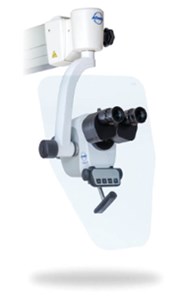
https://cutt.ly/2uADCfs
Otopront Protection Frame Series
Otopront has developed the Protection Frame Series, aiming to reduce surgeons’ exposure risk to COVID-19, by placing acrylic glass between patient and examiner. The frame can be swivelled, allowing unobstructed work with both hands, endoscopy and microscopy. It can be mounted onto the unit or as a stand-alone version on a tripod. Microscope-mounts or headlamp face-protections are also available.
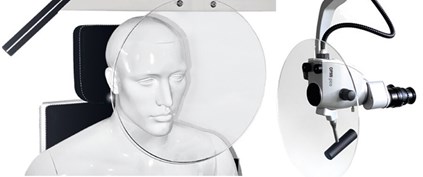
https://cutt.ly/Sumi3Ek
COVID-19 Sounds app
Launched by Cambridge University, the app is used to collect data to develop machine learning algorithms that could automatically detect whether a person is suffering from COVID-19 based on the sound of their voice, their breathing and coughing.

https://cutt.ly/3umoBf3
- Masks and visors -
Face mask for the deaf and hard of hearing
The struggles posed by facemasks for those with hearing issues inspired the development of masks with clear panels on the front to allow for lipreading, such as this one designed and produced by Eastern Kentucky University student, Ashley Lawrence.
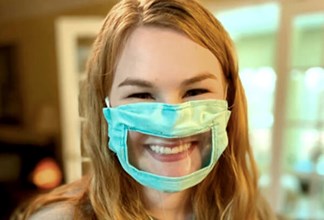
https://cutt.ly/LumpwYp
Innovia face visor
The device, one of the first UK manufactured face visors with CE marking to cope with the pandemic, has been specially designed to provide top, side and front face protection from aerosols and to minimise airborne cross-contamination.
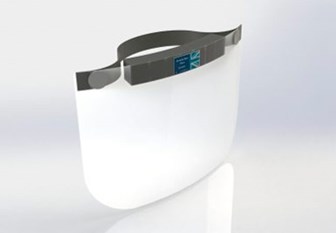
https://cutt.ly/3umpycb
- Operating theatre innovations -
Mastoidectomy in the COVID era – the two microscope drape method to reduce aerosolisation
With this novel method for conducting this aerosol generating procedure, a second drape essentially covers the patient and keeps any potential viral loads under the cover.
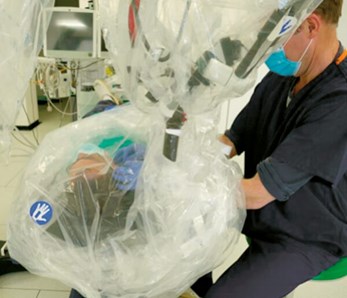
https://cutt.ly/zumpog4
Safer endoscopic sinus surgery (FESS) in the COVID era
A step-by-step video from Mr Ashok Rokade, ENT Consultant and Anterior Skull Base Surgeon, demonstrating creation of a surgical tent using a microscope drape to minimise aerosol exposure to the surgeon and other operating room staff in endoscopic sinus surgery.
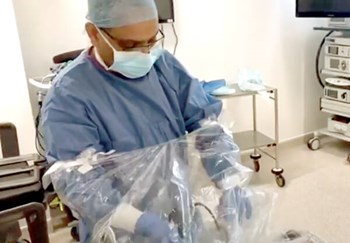
https://cutt.ly/Qumpg4Q
Karl Storz VITOM® 3D – 3D visualisation for microsurgery and open surgery
The VITOM® 3D system has applications similar to that of the operating microscope. The most important functions are controlled via the IMAGE1 PILOT, which is mounted on the operating table in the direct vicinity of the surgeon. This has the advantage of ergonomic work – the user is not confined to the eyepiece and can allow the operating theatre team to view the procedure in the same image quality as the surgeon.
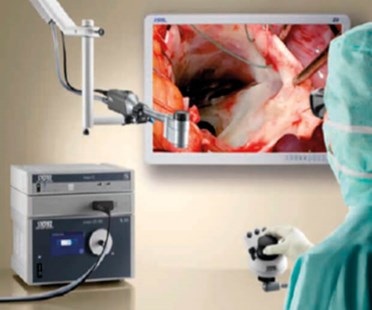
https://cutt.ly/TuAHCMi
ARRI Medical ARRISCOPE
Most protective equipment, such as face shields, make it difficult to work through the eyepiece of a microscope. ARRISCOPE is a digital surgical microscope with a high-resolution digital binocular, which can be separated from the rest of the microscope. This allows the surgeon to protect himself from the infectious aerosols through a transparent plastic disc.
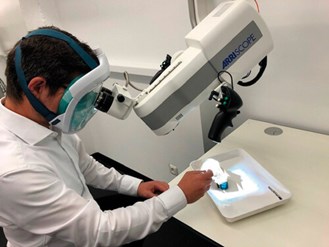
https://arri.ae/1308-2/
Snorkelling full-face mask
A modification of a snorkelling full-face mask to cover the face during surgery, designed by UK ENT Consultant, Rogan Corbridge. You can attach an anaesthetic filter to the snorkel, so the air you inhale is COVID-free.
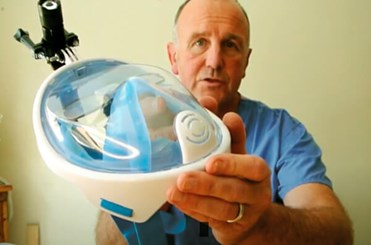
https://cutt.ly/Bumf0un
- Audiology innovation -
TympaHealth hearing assessment system
In the case of a patient who had necrotising otitis externa and was also immuno-comprised and so couldn’t be moved from isolation, the clinician was able to take this instrument to her and treat her on the spot.
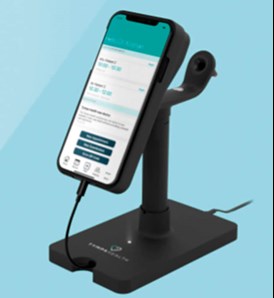
https://cutt.ly/Lumhqso
- ITU and ventilation -
UCL, UCLH and Formula One reverse engineer CPAP machine
Continuous positive airway pressure (CPAP) has been widely used in COVID-19 patients, and early on in the pandemic, mechanical engineers at UCL and clinicians at UCLH working with Mercedes-AMG High Performance Powertrains, reverse-engineered a device and rapidly gained regulatory approval – it took just 100 hours from the initial meeting to production of the first device.
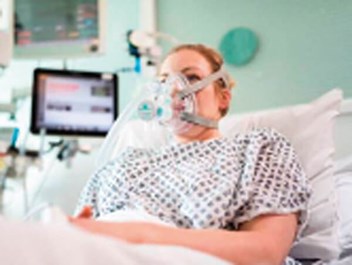
https://cutt.ly/KumdyJE
Penlon Prima ESO 2 Ventilator
Working with the VentilatorChallengeUK Consortium, which includes companies such as Airbus and Formula1 teams, this was the first new medical ventilator to receive regulatory approval in the UK. The UK government ordered 15,000 of the devices in mid-April.
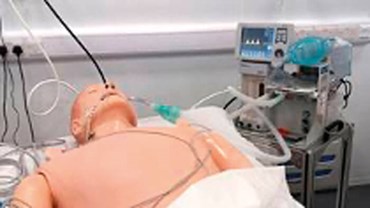
https://cutt.ly/UumdnMb
Ventilator splitter
To address the shortage of ventilators during the COVID-19 pandemic, the Johns Hopkins University team developed a 3D-printed device that could allow a single ventilator to treat multiple patients.
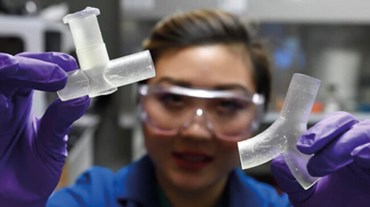
https://cutt.ly/7umdMxx
Evaluation report ‘Splitting the ventilator’
In the early stages of the pandemic, there was a real concern that there would be a significant lack of ventilators for the number of patients being admitted to ITUs. A team from the Netherlands consisting of engineers and ITU doctors has developed a method for “splitting” a ventilator to be used simultaneously on two patients. This was obviously intended to be used only in an emergency, and their protocol is here:
